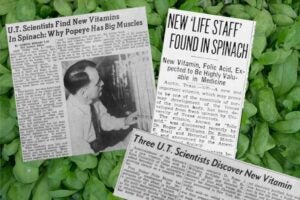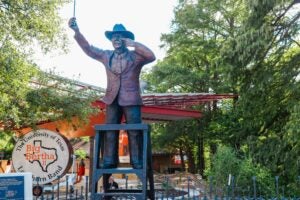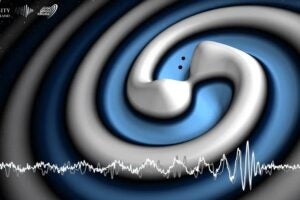The Harry Ransom Center, a humanities research library and museum at The University of Texas at Austin, has introduced an online database for its medieval and early modern manuscripts collection. The database includes more than 7,000 digital images and can be accessed via the Ransom Center‘s Web site.

The medieval and early modern manuscripts collection contains 215 items dating from the 11th to the 17th centuries. It comprises items from various collections, including those of George Atherton Aitken, W. H. Crain, Carlton Lake, Edward A. Parsons, Sir Thomas Phillipps, Walter Emile Van Wijk, Evelyn Waugh, John Henry Wrenn and others.
The Ransom Center is digitizing all of the collection items, which will be added to the database as they are completed. At present, digital images are available for 27 of the items for a total of 7,288 pages.
The database contains item-level descriptions for all 215 items, and the collection is searchable by keyword and any combination of the following categories: name, country of origin, century, language, format (such as charters or diaries), subject and physical features (such as musical notation or wax seals).
The medieval and early modern manuscripts collection is a rich resource for many areas of research. Scholars may use the collection to trace typographical developments in printing, compare different versions of the same text or examine a manuscript’s composition, decoration and binding to study the history of the book. The collection may also be valuable for those studying the history of liturgy and music.
“The new database for the Ransom Center’s medieval and early modern manuscripts collection is a wonderful resource for students and teachers here at the university and for scholars everywhere,” said Marjorie Curry Woods, professor of English and comparative literature at The University of Texas at Austin. “The detailed descriptions will help researchers working on individual manuscripts, provide a model for students learning palaeography and codicology, and allow scholars elsewhere to explore possible connections between the Ransom Center’s manuscripts and those in other collections.
“The complete digitized versions of manuscripts are invaluable. Manuscripts that are now too fragile to be handled are still available for research and teaching, and those that have small, difficult-to-read glosses and marginalia now can be deciphered with relative ease. In addition, digitized manuscripts can be projected for class presentations and can be consulted by scholars working collaboratively but in different locations. Access to the Ransom Center’s valuable early holdings is increased exponentially while at the same time reducing wear and tear on the manuscripts themselves.”
The collection is particularly strong in humanistic manuscripts, vernacular literature and religious documents. Other represented subjects include alchemy, architecture, astronomy, botany, cartography, classical literature, diplomacy, drama, genealogy, government, heraldry, history, kings and rulers, law, mathematics, medicine, monasticism and religious orders, music, philosophy, poetry, science and war.
The earliest item in the collection is the Tegernsee Miscellany manuscript, an 11th-century Austrian codex of various texts compiled by Abbot Ellinger of Tegernsee. Other highlights include 11 Books of Hours, most notably the “Belleville Hours,” and a 15th-century German ferial psalter and hymnal, significant because of its possible stylistic relationship to the Gutenberg Bible and early printed psalters.
The collection contains classical texts, including copies of works by Cicero, Horace, Ovid and Plato, and medieval literary works by Geoffrey Chaucer, Dante and Petrarch.
The historical documents in the collection represent numerous European monarchs, such as Henry VIII of England, Louis XIII of France and Philip III of Spain. Notable historical figures represented in the collection include Oliver Cromwell, Martin Luther, John Milton, Sir Isaac Newton, Abraham Ortelius and Sir Walter Raleigh. Document types include charters, commonplace books, contracts, correspondence, decrees, deeds, diaries, government records, indentures, letters patent, minutes, notarial documents, notes, papal bulls, petitions, pontificals, receipts, reports, speeches and writs.
The manuscripts represent numerous countries and historical regions, including Austria, Bohemia, Bolivia, Byzantium, England, Flanders, France, Germany, Ireland, Italy, the Netherlands, Portugal, Scotland, Spain and the United States. The represented languages include Dutch, English, Flemish, French, German, Greek, Hebrew, Italian, Latin, Middle English, Old English and Spanish.
Other holdings at the Ransom Center that contain early manuscripts include the George Atherton Aitken, Eastern manuscripts, clay tablets and cones, Kraus maps, Lanza-Acosta Bolivian, Arthur Livingston, papyri, Pforzheimer, Ranuzzi, Shelley family and the Austin Presbyterian Theological Seminary collections.
High-resolution press images from the collection are available.



